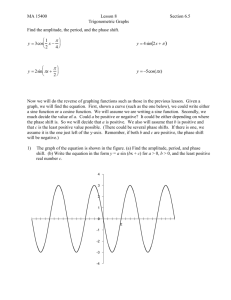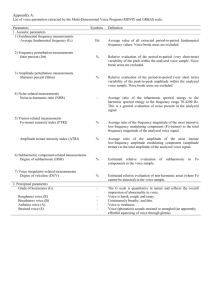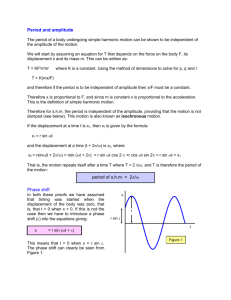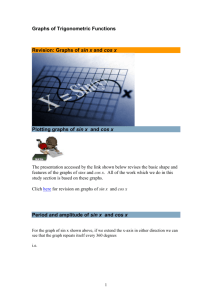Amplitude, Period, Phase Shift - Sec. 6.2
advertisement
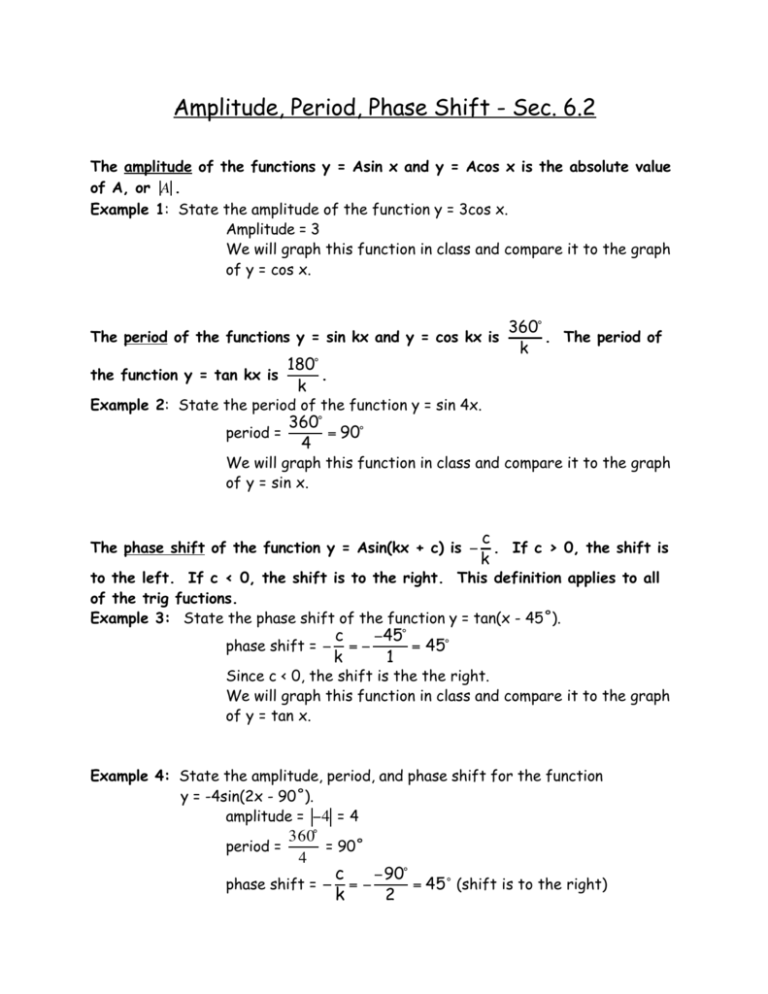
Amplitude, Period, Phase Shift - Sec. 6.2 The amplitude of the functions y = Asin x and y = Acos x is the absolute value of A, or A . Example 1: State the amplitude of the function y = 3cos x. Amplitude = 3 We will graph this function in class and compare it to the graph of y = cos x. The period of the functions y = sin kx and y = cos kx is the function y = tan kx is 180˚ . k 360˚ . The period of k Example 2: State the period of the function y = sin 4x. period = 360˚ = 90˚ 4 We will graph this function in class and compare it to the graph of y = sin x. c k The phase shift of the function y = Asin(kx + c) is − . If c > 0, the shift is to the left. If c < 0, the shift is to the right. This definition applies to all of the trig fuctions. Example 3: State the phase shift of the function y = tan(x - 45˚). phase shift = − c −45˚ =− = 45˚ k 1 Since c < 0, the shift is the the right. We will graph this function in class and compare it to the graph of y = tan x. Example 4: State the amplitude, period, and phase shift for the function y = -4sin(2x - 90˚). amplitude = −4 = 4 period = 360˚ = 90˚ 4 phase shift = − c −90˚ =− = 45˚ (shift is to the right) k 2 Example 5: Find the amplitude, period, and phase shift of the function y = 2tan(3x + 270˚) amplitude = none (the tan and cot graphs have no amplitude) 180˚ = 60˚ 3 c 270˚ phase shift = − = − = −90˚ (shift is to the left) k 3 period = We can write an equation for a trig function if we are given the amplitude, period, and phase shift. Example 6: Find the possible equations of a cosine function with amplitude 3, period 90˚, and phase shift 45˚. The form of the equation will be y = Acos(kx + c). First find A: amplitude = 3 means that A = 3, so A = 3 or -3. Now, find k when the period is 90˚. period = 360˚ k 360˚ = 90˚ k 90˚k = 360˚ k= 4 Then, find c for a phase shift of 45˚. phase shift = − c = 45˚ k c − = 45˚ 4 c = −180˚ c k − The possible equations are: y = 3cos(4x - 180˚) or y = -3cos(4x - 180˚)


